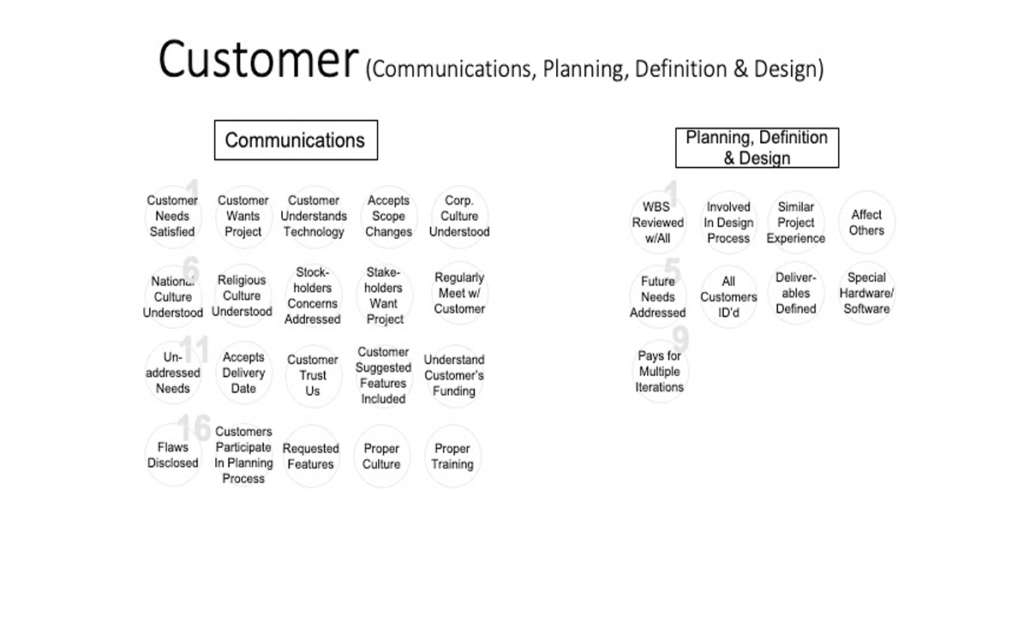
COMMUNICATIONS:
1 – Customers needs are satisfied?
2 – Does the customer want this project?
3 – Does the customer understand the technology?
4 – The customer accepts scope changes?
5 – Is the customer’s corporate culture understood?
6 – Is the customer’s national culture understood?
7 – Is the customer’s religious culture understood?
8 – Are the firm’s stockholders concerns addressed?
9 – Do the stakeholders want the project?
10 – Does the firm have representatives who regularly meet with the customer?
11 – Are there any unaddressed needs that must be addressed?
12 – Does the customer accept the planned delivery date?
13 – Does the customer trust us?
14 – Are (will) any customer-suggested features be included in this project?
15 – Does the firm understand the customer’s funding mechanism?
16 – Are product/ service/ breakdowns/ safety flaws disclosed (in detail – such as the circumstances associated with each issue, how each problem will affect scheduling/ current and future business operations to customers and plans to fix them) before they accept the end item?
17 – Does SM/ PM invite customers to participate in the planning process? (Yes = good)
18 – Is customer getting enough requested features to be pleased? (Yes = good)
19 – Does the firm, SM and PM create the proper culture? (Yes = good)
20 – Did/ does the end-use customer receive proper training to operate the product/ system? (No = bad)
————————————-
PLANNING, DEFINITION & DESIGN:
1 – Is the Work Breakdown Structure (WBS) reviewed with all concerned?
2 – Is the customer involved in the design process?
3 – Customer has experience with similar projects?
4 – Are others affected by this project, beyond the intended customer? (e.g., by standers)
5 – Are future needs addressed?
6 – Were/ are all customers identified?
7 – Are the project’s deliverables defined?
8 – Will the customer be required to purchase or develop special hardware/ software?
9 – Is the customer required to pay for multiple iterations (adversely affects project’s scope)?
